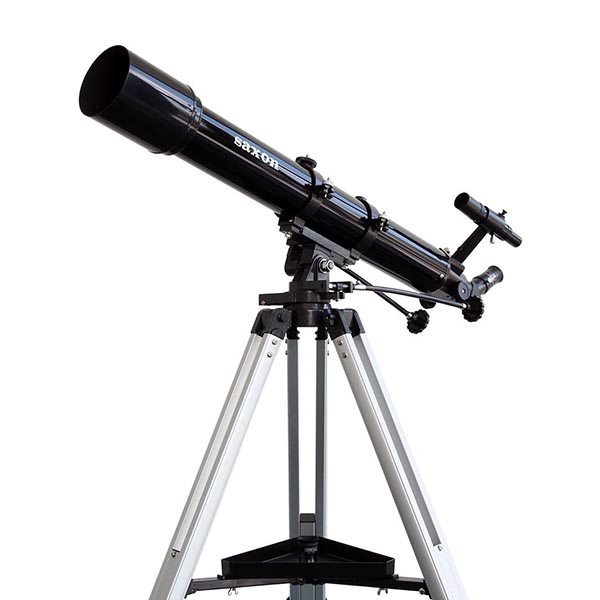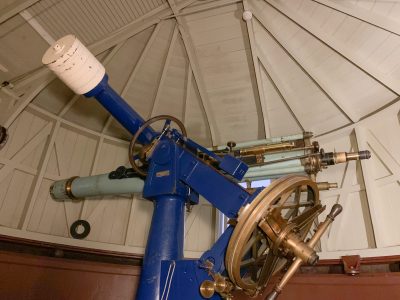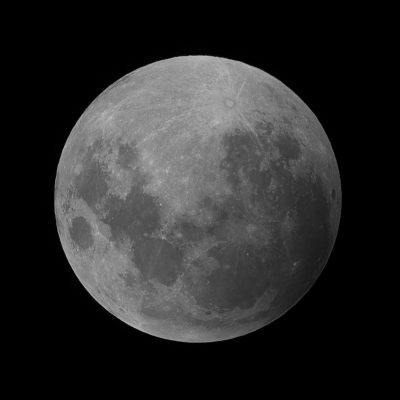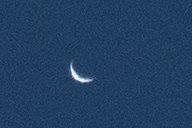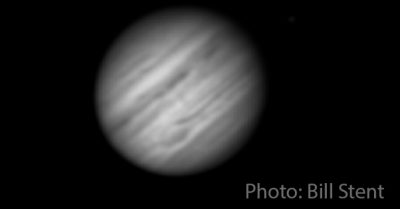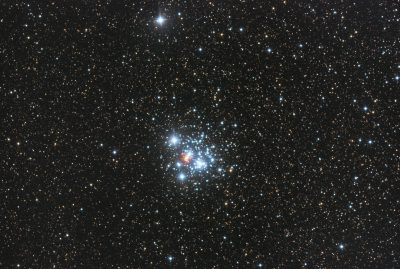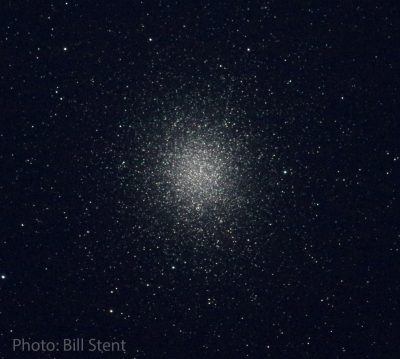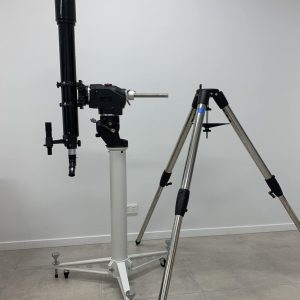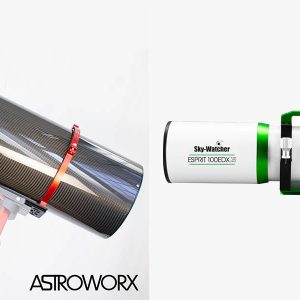What can this thing see? It’s a common question
This is what a client asked me this morning. I’ve been asked a number of times now and I thought it’d be useful to have a prepared list, with specific examples. As the owner of a decent beginner telescope, you will be able to see examples of all the targets I’ve listed down below, most (probably not all) from a back yard in a mildly light-polluted city.
When you look at objects on the Internet, the description often says that “this can be seen with a small telescope”. Small scopes are better than a lot of people realise!
Funnily enough, I get the same question from visitors to the Melbourne Observatory where I work as a telescope operator. I specialise there on an enormous Troughton and Simms refractor from 1874. But strangely, located right in the city, the objects I can show tourists are pretty much exactly what a small refractor can show you at home.
What specific type of telescope are we talking about?
The scope I have in mind is a saxon 909AZ3. It’s probably our number one selling scope, and great for beginners. You can get smaller ones, but we don’t recommend them as they really won’t give you a satisfying view of much at all (we won’t tolerate “hobby killer” scopes). The 909 is a doublet refractor with standard glass lenses, a 90mm aperture and 910 mm of focal length.
A 90mm aperture is small, but not tiny. Aperture determines how much light gets into the scope (and ultimately your eye) so a small aperture means you want to stick to relatively bright targets.
Focal length directly determines the native magnification of the telescope. In numbers, if you use a 10mm eyepiece on the 909, it produces 910/10 = 91 times magnification. Most terrestrial scopes are less than 600mm, but there are lots of telescopes, such as Schnidt-Cassegrains, that have more. What I’m saying is that 910mm is sort of middle of the spectrum there.
Obviously, there are other types of beginner telescopes. An 8″ Dobsonian will give you much better views of everything I talk about here, but they’re larger and less portable, as well as being more expensive. Besides, no matter who you are, there’s always a bigger telescope! You can get smaller reflector telescopes, like a 130mm (or larger) reflector on an equatorial mount. Reflectors tend to have more aperture, but less magnification, which means your planetary views won’t be quite as large. Besides, an equatorial mount isn’t quite as good for beginners as it needs to be carefully aligned with the Earth’s pole.
How far can it see?
This is a bit of a tangent, but to be honest, it’s also a very commonly asked question. The answer is that as long as enough light lakes it to the telescope, you’ll be able to see it. On a good clear night, you’ll be able to see a hint of the Orion Nebula, which is 1350 light years away. Obviously, though, on a foggy day you won’t be able to see across the street. Telescopes don’t really have ranges as such.
Types of things you can see – the “practical” list
I’m going to talk about the class of target (apart from the Moon – we only have one of those), then give an example that you should be able to find relatively easily. I will assume you’re relatively well practiced with your scope, and that (very importantly) you know how to adjust the finderscope so you can find your targets relatively quickly. None of these targets are the really deep dark fuzzies that you’ll need a big aperture to see, which means they’ll all be pretty easy to spot in your finderscope.
Moon
Of course you can see the Moon. It’ll be easily visible at nearly all times of the month, in all phases, as long as it’s above the horizon. Your challenge is to find it, and that’s not always easy, especially when it’s a very thin crescent. This is where phone apps like Sky Safari help a lot.
To get the best view of the Moon, I’d be using a slightly longer eyepiece, say between 20 and 30mm. This isn’t going to make the Moon fill the view though. If you want that you’ll have to use an eyepiece of about 10mm. The disadvantage of filling the view with the Moon is that you’ll have to keep moving the telescope. The Earth has a habit of continuing to turn and the Moon will swim out of view in about 30 seconds.
My biggest tip here is that you needn’t bother looking at the full Moon. Not only is it painfully bright, even with a 90mm aperture, it’s boring! With the light coming from directly behind you, those craters aren’t casting any shadows. These really give you a good idea what’s happening on the surface and give the Moon a lot of interest.
You can catch the Moon during the day in the week or so before the new Moon if you look east in the afternoon. You can also see it in the week or so following the new Moon if you look the west in the morning. Through a telescope the image isn’t going to be fantastic as the Moon’s light is swamped by scattered light in the atmosphere. But it’s interesting.
Planets
More than nearly any other object, planets are tiny and bright. Bright means they’re easy to find, but tiny means you might not see more than a dot. The 909 as a good amount of magnification, which means the major planets (Venus, Mars, Jupiter and Saturn) will look a treat. Planetary viewing is perhaps the best feature of a telescope like this. To get the planet, find it in the finderscope first, then use the low-power (25mm) eyepiece to get it centred in the telescope’s view. Then switch to a high-power eyepiece to get the most magnification. Even with the most magnification, you’re never going to get a huge planet filling your view. Like I said, planets are tiny!
You’ll notice that on warm nights the closest views are ruined by the Earth’s atmosphere, which wobbles and shakes, messing up the view. On nights like these, use the lower power eyepieces, but on the worst nights, sometimes planetary viewing just isn’t viable.
Inner planets
Because they’re on inner orbits, Mercury and Venus never get far from the Sun. This means they’re only going to be visible soon after sunset or soon before sunrise, and they’re never going to be high in the sky. Mercury in particular is more likely to be visible between trees in your local park. At times, Venus is incredibly bright, meaning you’ll be able to find it easily. Through the telescope, using the high-power eyepieces, both planets will be small, Mercury especially so. However, with both of them, you might be able to make out a tiny crescent. (This is Venus.)
Larger planets
Mars is a planet that you need to know a little more about. Because it’s the next orbit outside the Earth, at times it’s very close (when we’re overtaking it on the inside) and sometimes it’s a long way away, on the other side of the Sun. When it’s close (at opposition), you should be able to see Mars as a small circle, and if you’re sharp-eyed (and it’s the right time of the Martian year), you might be able to make out an ice cap. The 909 probably isn’t going to show you much detail on the surface, although you might be able to tell there are different colour patches on the planet. When Mars is on the other side of the solar system there’s almost no point in observing it, apart from checking its colour, which is an impressive orange-red.
Jupiter and Saturn are very large planets and are always great in a refractor with the 909’s abilities. These are the planets you want to see. Jupiter will show up nicely as a small disc, and on good nights you should probably be able to see horizontal stripes on the cloud tops. The Great Red Spot is a bit harder to see, and on most nights the Earth’s wavy atmosphere will make it very difficult. (Remember that Jupiter spins every 10 hours, so a bit more than half the time it’s out of view.) On the right night though it’s possible, and you should get a glow of satisfaction knowing you’ve caught it.
The other thing about Jupiter is its moons. You can very easily see the four Gallilean satellites (Io, Europa, Ganymede and Callisto) strung out like ducklings in a line around Jupiter. These change positions constantly, and if you make notes of where they are, and then come back in a couple of hours, you’ll probably notice changes. Occasionally, on a really good night, you might see shadows of one or more moons being cast on Jupiter’s cloud tops. This type of observation would be close to the limit of what a small telescope can do.
Outer planets
The other planets, Uranus and Neptune can be seen with a small telescope like a 909. These planets will look like stars, and the best way to identify them from the background is their colour. Uranus is a turquoise colour, while Neptune is bluer.
Dwarf planets and asteroids are also something you can see with a telescope like the 909, although it’s not easy. These objects look exactly like a star, and so you’ll have to rely on the fact that they move slowly over time. It’s probably not going to be something that you see on one night, either. Make a sketch, then come back in a week. Difficult, but rewarding.
Double (and multiple) stars
You probably haven’t heard that a good share of the stars we can see are not alone, and I’m not talking exoplanets. We think that more than half of the stars you can see are in multi-star systems. These are two or more stars that orbit each other. With the naked eye, only the closest and widest are obviously pairs, and most appear as one even with optical telescopes. However, there is a good list of stars which you can split with a telescope, and often you don’t need more than a small telescope to do it.
The best example I know is Alpha Centauri, or the leftmost of the Pointers for the Southern Cross. With your naked eye, or even with binoculars, you can’t possibly tell it’s a pair. After all, they are only about 5 arcseconds (a little more than one thousandth of a degree) apart. But through the 909, if you use the high-power eyepiece, you’ll clearly be able to tell there are two stars, right next to each other. These stars orbit each other every 70 or so years, and when I was younger, they were clearly closer together.
The example in the photo is Southern Albireo, which is a double star with different colours. Photos of double stars are hard to get as the stars are so close to each other that they bleed together, but if you look closely you’ll see that there are two stars there. Very often you’ll find that they look better through the scope than they do in a photo.
Open clusters
The next class of objects is similar, but instead of there being just two or three stars there can he dozens or even hundreds. This is called an open cluster, where the stars are circulating in the same gravity well. This means they are actually interacting with each other. The stars in the cluster can be of different types, including red giants, so the cluster can have very attractive colours. Clusters can be very large, and you’ll find that they’re best in longer eyepieces, such as 25mm. I like to view them so there’s a good amount of black around the outside, because if you zoom in too much they just look like stars.
This example is the Jewel Box, NGC 4755, which is just outside the Southern Cross. This is the favourite of a lot of astronomers, as it’s very pretty and colourful. Most of the stars are blue, but there’s a prominent orange star in the middle.
Globular clusters
Moving up the range, we get to the Globular Cluster. These are very interesting objects that hang around the edge of the galaxy. They’re normally incredibly old, and legend has it that the stars in globular clusters are all the same generation. Omega Centauri (the cluster in the image) is an exception, having two generations of stars. (I learned that from a PhD student, by the way, showing the value of Astro Talks!). The other premier globular cluster seen from the Southern Hemisphere is 47 Tucanae, which is very close to the Small Magellanic Cloud.
Typically, these objects are very faint and it’s probably about the limit of what a small telescope can do, especially if it’s battling light pollution. It’ll probably look like a faint round blob, and you may have to use averted vision. It’s a challenge.
Nebulas
Speaking of challenges, this next class of object is going to push your telescope to the limit, even in a dark sky site. There are only so many bright nebulas you can see, the most obvious being M42, the Great Nebula in Orion. You can look for the Carina Nebula and possibly M8 the Lagoon Nebula in Sagittarius. Through the scope, these will look like faint silvery blobs, but what you’re looking at are gigantic star factories.
I don’t want to include a photo of a nebula here. Photographs are normally much better than the human eye can see, and it would raise your expectations irresponsibly.
Terrestrial uses: whales, ships, mountains…
Finally, you don’t need to point your telescope at the sky. Refractor telescopes are excellent for terrestrial viewing, as (if you use a diagonal) the image won’t be upside down. Reflector telescopes, and especially Dobsonians, are not great for land viewing as the image is on a weird angle. The low-power eyepiece is best for land viewing. You can look through a window (depending on how flat the glass is – and how dirty it is – but it’s best to take the telescope outside.
Conclusion
No matter where you are in your telescope journey, there’s always that scope that’s bigger and better. Every telescope has advantages and limits. If you have a good understanding of what your scope is capable of, you’ll find the hobby much more rewarding. Sometimes, knowing what your telescope is not capable of is just as important!
